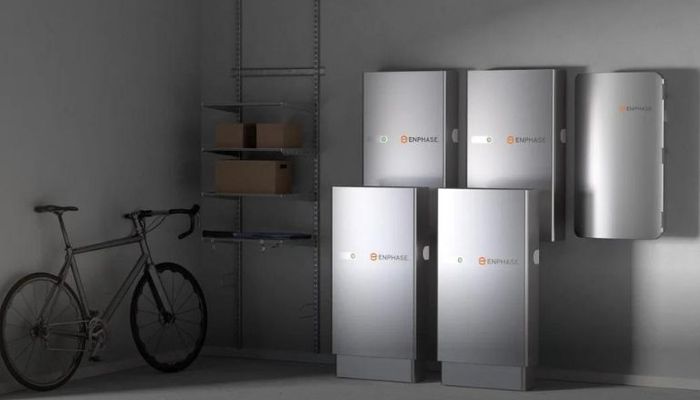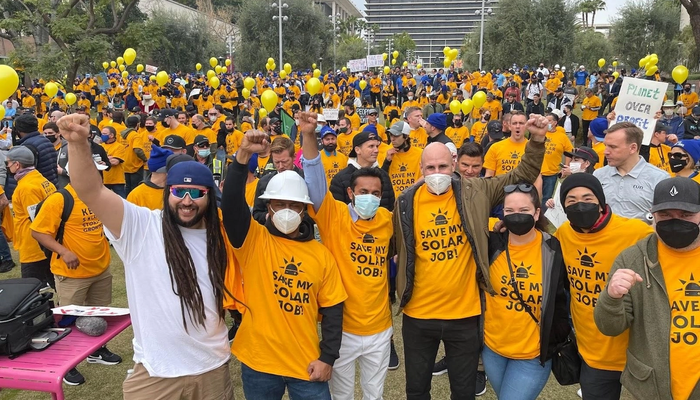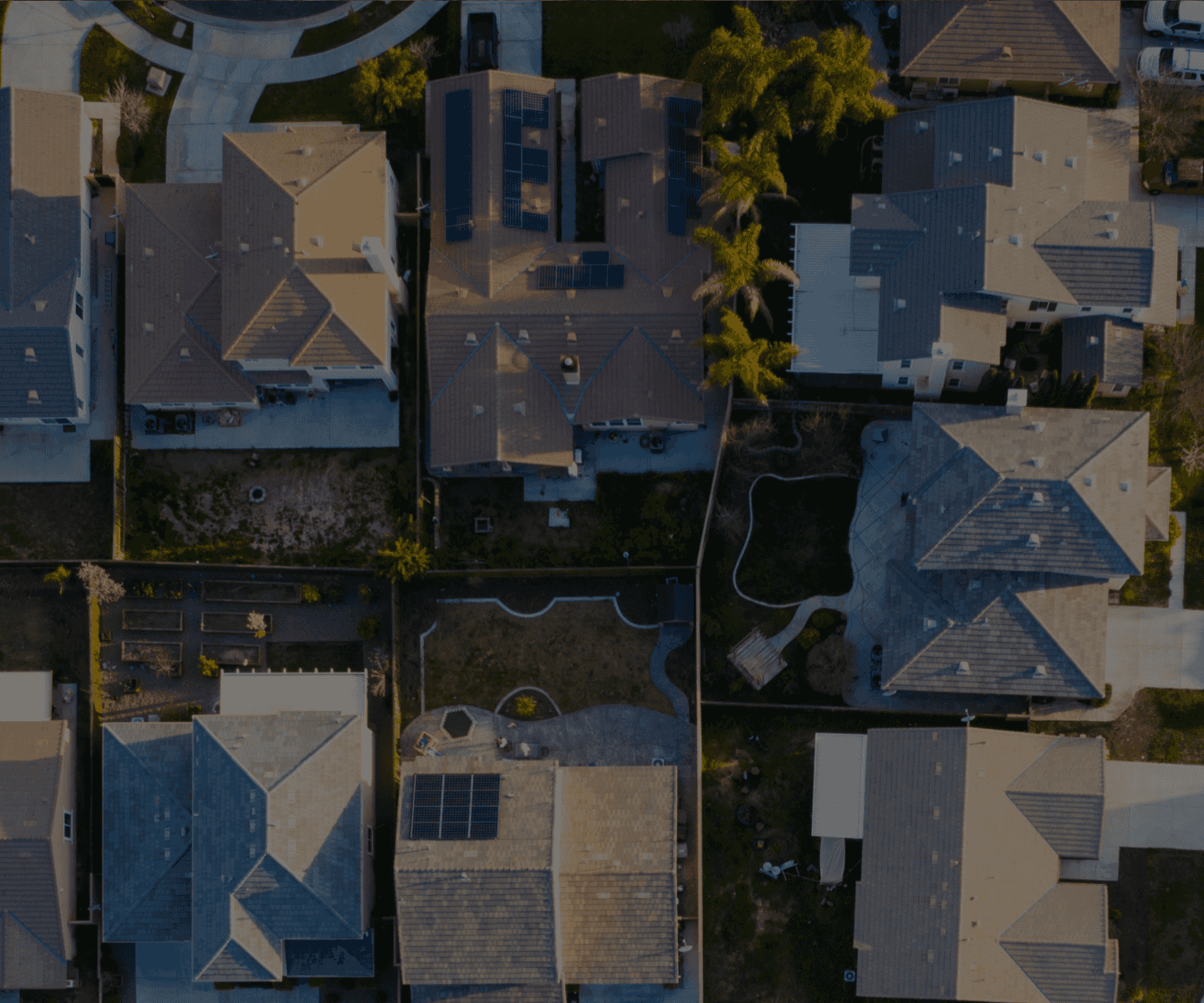Solar Panel Post-Installation: What's Next?

Guest Post by Big Living | Little Footprint
So you’ve finished installing your solar panels — what’s next? There’s still a series of solar panel post-installation steps you need to complete, including:
- Scheduling and passing your inspection
- Obtaining permission to operate
- Updating your meter
- Monthly to yearly maintenance, care or troubleshooting.
You’ll be relieved to hear that the post-installation steps are relatively easy compared to the DIY solar panel installation process. We speak from personal experience as DIY-ers who went through the process ourselves a few years ago!
This blog will cover all the solar panel post-installation steps you need to know, from inspection to maintenance and monitoring.
To learn more about our DIY solar panel journey and other tips, check out the Going Solar Series on Big Living | Little Footprint.
Schedule and Pass Your Solar Inspection
The first step after your installation is scheduling and passing your solar panel inspection. Solar panels require electrical and structural work, so your local government and utility company must ensure your installation meets building and safety codes.
An inspector will review the entire system during the inspection process, focusing on the electrical system and actual structure. They will evaluate different categories, comparing your installation to the approved plans from your permitting process with your local Authority Having Jurisdiction (AHJ).
If the inspector finds no issues with the system, then congratulations — you’ll undoubtedly pass your solar panel inspection! However, sometimes you may need to fix a few things before you’re able to pass the initial assessment. Don’t stress — the inspector will clarify what needs to be improved so you can reschedule and pass your inspection the second time around.
If you’re worried about the inspection process and what they look for, check out this solar panel inspection checklist and this article on how to pass your solar inspection. These posts go more in-depth on the solar inspection process and help put your mind at ease.
Set Up Interconnection and Obtain PTO
After passing your inspection, the next step is to set up solar interconnection and obtain your utility provider’s permission to operate (PTO).
Solar interconnection is the approval process with your utility company, ensuring you meet size and safety specifications and understand how your system impacts the grid. It is similar to the permitting and inspection process, but you’ll work with your utility provider instead of your local government.
You’ll typically complete the interconnection application when you submit your permits. This needs to be complete before your actual installation to ensure you meet the initial requirements. For example, we had to adjust the size of our solar panel system due to the utility company’s formula on energy output exceeding their allowed amount. It wasn’t a signficant issue, as we had assistance from GoGreenSolar, who helped us with the interconnection process from start to finish!
After your DIY installation, the next post-installation step is to obtain permission to operate (PTO). It’s simply another inspection process from the utility company to ensure your system meets standards. You’ll schedule an appointment with the utility company to review the system, and the inspector will let you know if there are any issues.
Upgrade Your Meter
After the inspection, your utility provider will install a net meter to track your solar energy output if you qualify for net metering. A net meter tracks the ups and downs of your daily energy production and use, and you’ll receive a bill for the difference.
Once these items are complete, you’ll get an official PTO document that gives you the green light to turn on your solar panel system. Congratulations, you’ve finished all the solar panel post-installation inspections and are ready to go!
Set Up Monitoring
Now that your system is approved and ready to run, you’ll want to monitor it to know it’s working.
Most solar panel kits come with a monitoring system that helps you keep tabs on your system’s functionality, efficiency and long-term performance. For example, our SolarEdge Inverter came with access to the mySolarEdge app to help us monitor our system.
After setting up the monitoring app and pairing it with your panels, you’ll be able to get data instantly, track your energy usage and production in real time, view system statuses, and even troubleshoot common issues yourself.
Troubleshooting
Like any other electronic or computer system, common technical issues can pop up that you need to address and troubleshoot.
Here are a couple of common troubleshooting issues we ran into as DIY-ers that you may need to address.
- The system doesn’t power on initially or produce power: Double-check that no wires are crossed or loose. Keep in mind you’ll need to wait about 5 minutes after turning the system on before it starts making power.
- Switched internet setup and no longer getting data: You need to reconnect and pair your system again. Follow the manufacturer’s instructions.
- App shows panel or optimizer is not producing: The app may identify the problem panel, or you may need to take the panels out of the chain one at a time to identify the problem panel or optimizer. Then, contact your manufacturer about a warranty replacement.
- Suddenly, the entire system doesn’t produce power: First, check that the panels are clean and receiving sunlight. If they are, check for loose wires, tripped breakers or inverter problems. Contact your manufacturer for troubleshooting if the issue persists.
If you have issues that you can’t self-diagnose or resolve using the monitoring app, then contact GoGreenSolar or the manufacturer. The manufacturer can log in to the monitoring portal remotely and run diagnostics to help you resolve issues. The GoGreenSolar team also has the technical expertise to address problems and get you what you need.
Note: Your monitoring system typically won’t lose data if you can reconnect to your system quickly. However, it’s good to check the monitoring app at least once a month to make sure data is tracking correctly.
Routine Maintenance and Cleaning
Some maintenance and cleaning are required to ensure the longevity and functionality of your solar panel system. Overall, there isn’t much maintenance, as there are no moving parts. However, solar panels are exposed to Mother Nature and the elements, so routine cleaning is necessary to ensure the panels can function at total capacity.
If you live in a moderate climate, we recommend cleaning solar panels at least once a year to remove any dirt and grime that accumulates and doesn’t wash away with the rain.
If you live in a climate with frequent dust storms, heavy snow or deal with many falling leaves, you might need to clean your panels a bit more frequently.
Truthfully, you can get away with cleaning solar panels seldomly, like only if you notice the energy output is decreasing. That’s why it’s crucial to set up your monitoring system properly, to tell if the system is underperforming.
Lastly, you don’t need any fancy tools to clean your panels. Since solar panels are made of glass, all you need is mild soap and a sponge or a gentle glass cleaner. A window washing kit also works well.
After completing your solar panel post-installation steps, you’ll be able to enjoy clean, green energy for years to come!
Our final tip: We worked with GoGreenSolar for our entire solar project and highly recommend them for your solar panel and equipment needs. The GoGreenSolar team made sure our DIY installation went as smoothly as possible. Their experts are always available to offer advice and resolve issues, even after our installation is complete.
Good luck with your solar panel installation and post-installation process!

About the authors: Amanda and Tyler Santoro are the creators of Big Living | Little Footprint, a site focused on helping people live a greener lifestyle. They are constantly doing DIY projects for their house like installing their own solar panels. They also focus on eco-parenting, making sustainable parenting choices and teaching their child to be eco-conscious. Their family strives to live big while still leaving a little footprint on their environment.
You can follow along with them on their journey and all their tips for improving your sustainable living lifestyle.






